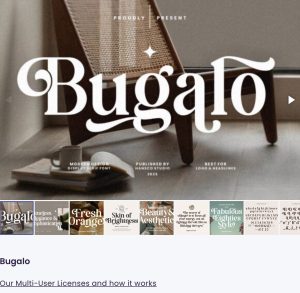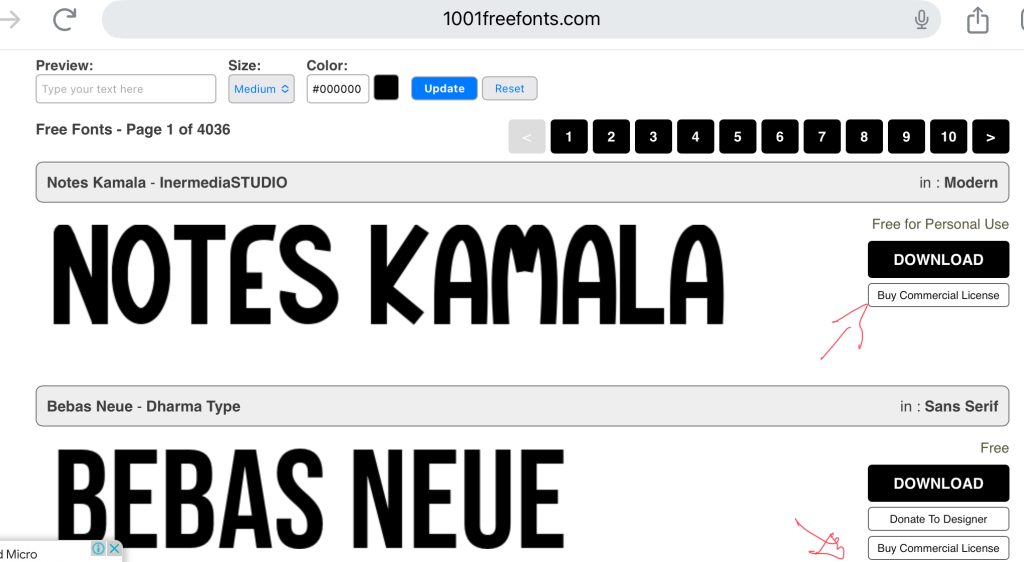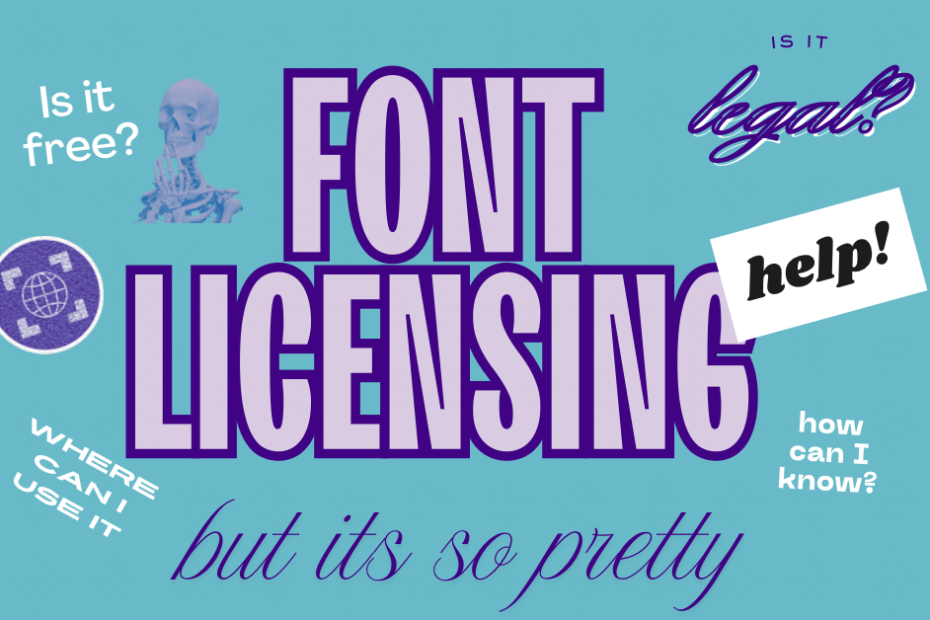Font licensing is complex and recently in a business forum a small business posted an email they received from a font foundry advising the font used in their logo and website was unlicensed. The email explained that a license was required to use it. Initially they thought this was a scam but it wasn’t. They had a graphic designer create their logo and a web designer for their website.
If you’re like most small or solo business owners, you’ve probably downloaded a font or two to create your logo, whip up a flyer, or build your website. Maybe you’ve used Canva or dabbled in design software yourself. But did you know that using the wrong font without the correct license could land you in legal trouble?
Font licensing is one of those behind-the-scenes areas that’s easy to overlook—but it’s important to get it right. Let’s break it down in a way that’s practical, clear, and relevant to small Australian businesses.
What is Font Licensing?
When you download or purchase a font, you’re not actually buying the font itself—you’re buying (or being granted) permission to use it in certain ways. That permission is called a font license.
Think of it like this: a font is intellectual property, just like music or software. The creator owns it, and you need a license to use it legally.
Different licences allow for different uses. Some fonts are free for personal use but require a paid licence for commercial use. Others are completely free to use anywhere. But many, especially the ones used in professional branding, require a specific type of licesense.
You can buy a guide regarding font licensing here from The League of Moveable Type.
Common Types of Font Licenses
Here are some of the main types of font licenses you might encounter:
1. Desktop License
This lets you install the font on a computer and use it in static designs—think logos, business cards, flyers, and PDFs.
Important: Just because a designer sends you a logo with a font doesn’t mean you can install that font on your own computer. If you want to use it elsewhere (like for branded docs), you may need to purchase your own licence.
2. Webfont License
This covers the use of fonts on your website. It’s usually based on how much traffic your site gets (measured in page views per month).
Tip: Google Fonts are a safe bet for web use—they’re free and come with a web licence.
3. App License
Needed if you’re embedding a font into an app or software interface.
4. ePub License
For embedding fonts into eBooks or other digital publications.

Bugalo font Hans Co
“Free Fonts” – What’s the Catch?
There are thousands of “free” fonts out there, but free doesn’t always mean free for business use. Many are:
- Free for personal use only (not legal for your business)
- Shared illegally on dodgy websites
- Licensed in confusing or inconsistent ways
Always check the source and licensing terms. If you’re using sites like DaFont or 1001 Free Fonts, proceed with caution—some fonts are safe, others are copyright time bombs, check on each fonts licensing information before you download.

Screenshot from 1001freefonts
Better sources for licensed fonts:
- Google Fonts – completely free and safe for commercial use
- Font Squirrel – carefully vetted for commercial use
- Adobe Fonts – included with Adobe Creative Cloud subscription

Image from Lost Type Co-op webpage.
Font Licensing and Your Logo
Let’s say you’ve downloaded a pretty font and used it to create your logo. If you didn’t get the right license, technically you don’t have the legal right to use that font in your branding. That’s risky.
And if a designer did it for you, they should have purchased the correct license—but not all do. You need to double-check. Why? Because:
- Font licenses are usually non-transferable (you may need your own license even if a designer used it)
- You could be asked to cease using the font or even face legal claims
- It could create major headaches down the track if you want to trademark your logo
The Role of Graphic Designers (and What to Know if You Can’t Afford One)
A good graphic designer should always:
- Know the licensing requirements of any font they use
- Select fonts based on your needs and budget
- Advise you if you need to buy a font yourself
But here’s the reality, many small businesses skip hiring a designer due to cost, or they work with less experienced freelancers who may not understand the legal side of font use.
If you’re DIY-ing your branding, that’s totally valid—but make sure you’re sourcing fonts responsibly. Also look at font pairing when DIY.
How We Handle Font Licensing at Rawmarrow
At Rawmarrow we work with small and solo business owners every day, and we get that budget matters. That’s why when we’re designing your brand identity, we provide font options that match your budget and usage needs.
In fact, most of our branding package clients end up using high-quality fonts that are free for commercial use—this keeps things simple, clear, and affordable.
However, depending on your goals and where your brand is going, we may offer premium font options too. If that’s the case, you’ll always be:
- Clearly advised if a font requires a paid licence
- Told the cost of the licence upfront
- Given a recommendation if we believe it’s better for you to purchase the font outright in your own name (rather than us purchasing it on your behalf)
We don’t believe in leaving you in the dark—transparency is part of the service.
If we’re doing design work for you and you ask us to use specific branding fonts that you’ve chosen or already use, we’ll assume you have the correct commercial license for those fonts. It’s your responsibility to ensure that you’re legally allowed to use them, and providing those font names to us, you accept liability for any licensing issues that may arise. We’re always happy to help you check licensing terms if you’re unsure—but ultimately, the legal use of client-supplied fonts is the client’s responsibility.
Fonts Might Be Small, But The Risks Are Real
Here’s the thing: font licensing isn’t the sexy part of branding, but it’s a foundational piece of the puzzle. Using fonts incorrectly can lead to takedown notices, rebranding costs, and even fines. It’s not worth the risk.
Quick Recap
- You can’t just download any font and use it in your logo or website.
- Always check if a font is free for commercial use. (actually read the license)
- If you hire a designer, ask what fonts they’re using and who holds the license.
- Stick to trustworthy font sources.
- Google Fonts is your friend.
Where to Find Free, Commercially Licensed Fonts
- Google Fonts
- Font Squirrel
- The League of Moveable Type (my favourite)
- Velvetyne (not the easiest user interface)
- Lost Type Co-op (some free, some donate to author)
If you’re not sure whether you’re using fonts legally in your brand, feel free to get in touch with us at Rawmarrow—we’re always happy to help untangle the mess and point you in the right direction.
